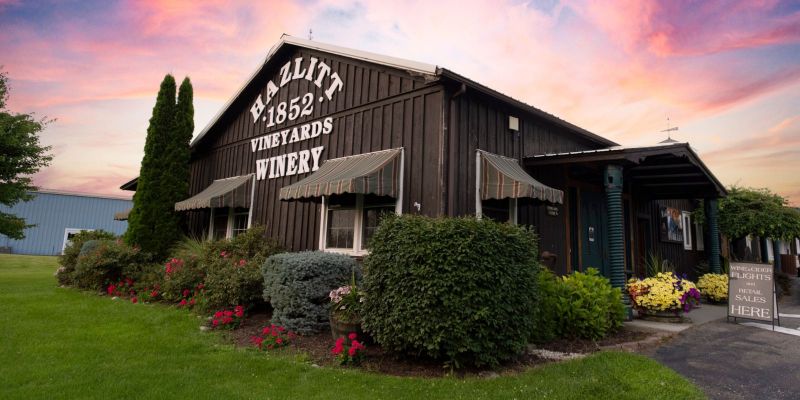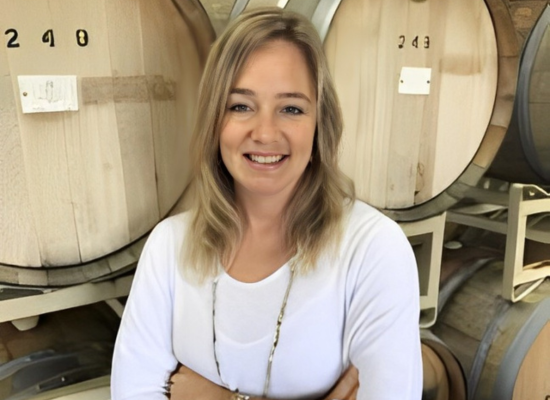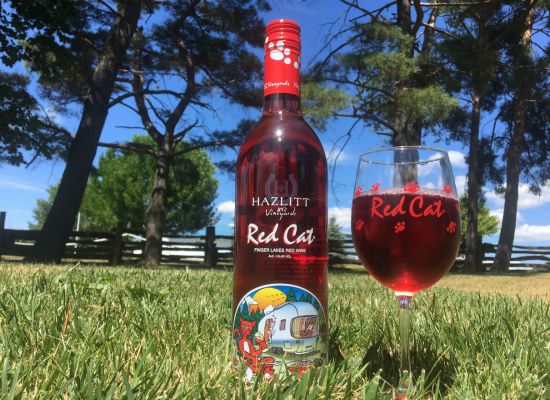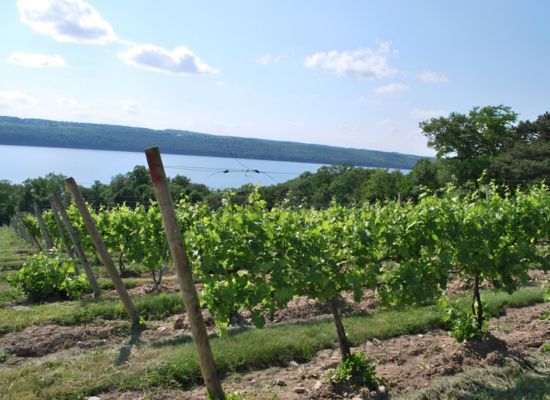Educating Sommeliers Worldwide.
By Beverage Trade Network

US wineries outside the West Coast, and those with unique product lines, often have intriguing business stories. The success of Hazlitt 1852 Vineyards in New York’s Finger Lakes region offers lessons for the industry as a whole. Read this intriguing interview with co-CEO Leight H. Triner.
Founded in 1984 on the eastern shore of Seneca Lake, NY, Hazlitt 1852 Vineyards has established itself as a pioneer in the wine industry, building on a tradition of superb viticulture spanning nearly four decades. Known for their commitment to quality and innovation, Hazlitt 1852 Vineyards continues to push boundaries in the wine industry. It recently, for example, introduced two new wines: Strawberry Watermelon and Peach Mango. These additions showcase Hazlitt's commitment to crafting high-quality, fruit-flavored wines that capture the essence of natural fruits, enhancing their diverse portfolio which includes the “Cat” line.
Although sweet and flavored wines form an important product segment for Hazlitt, they also vinify traditional Vitis vinifera wines. Custom crush, hybrids, American native grapes, wine tourism, and learning lessons from consumers who like sweet wines all form part of the Hazlitt story. Co-CEO Leigh Triner was kind enough to answer some of editor Charlie Leary’s questions about the business and the unique Finger Lakes wine region. Read on to see what the “Cat” stands for.

Image: Co-CEO Leigh Triner
Some of the first wineries in the nation began the longstanding wine industry in the Finger Lakes Region. This area of the New York State would typically be too cold for vinifera grape-growing but it was found that these grapes can actually thrive on the hillsides surrounding the Finger Lakes. The deep water of these lakes provides a temperature-moderating effect on the vineyards. There are many different types of well-drained soil in this area and grapes thrive in many of them. The region was originally famous for Vitis Labrusca grapes like Concord Niagara and Catawba which make sweeter, fruity wines. After that, hybrid grape varieties like Cayuga White, Vidal Bland, and Vignoles became popular. In the mid-1960s and 1970 vinifera grapes began to get planted successfully as well. Now all these different types of grapes thrive in this region. The vinifera varieties with the most staying potential appear to be Riesling, Chardonnay, Gewurztraminer, Cabernet Franc, and Merlot. Many others are planted here as well.
Hazlitt 1852 Vineyards was established in 1985 as a small farm winery by my late parents, Jerry & Elaine Hazlitt They quickly grew the winery from very small to one of the largest in the state in the first 25 years. A large reason for this successful growth was an iconic wine they produced called Red Cat. It is a sweet red wine made with mostly Catawba grapes and a small amount of red hybrids to make its standout red color. The wine was named “Cat” after the Catawba grapes that it was made from.
My dad thought up this catchy name and presented the wine in a very easy-going, hospitable style and it resonated with people. He also never sacrificed quality and it won gold medals in most years that it was entered into competitions. After my brothers grew old enough, they too, began to work in the winery and all their friends loved this wine as well. They served it at all their crazy lakeside bonfire parties and pretty soon it became known also as the wine that will “get your party started.”
In 2010 we purchased the historic Widmer Wine Cellars in Naples, NY as we had outgrown our production facility in Hector. We now use that facility to manufacture all of our sweet wines as well as make wines for other wineries. Our custom crush side of the business over there is called East Coast Crush and Co-Pack. In Hector, we still have a production facility and all of our vinifera wine is made there with a dedicated, Cornell-educated winemaker, Michael Reidy. I worked in the winery through high school and then returned in 1999 full-time to help my brother and my parents manage the growing business. I have been back full-time since then and am now the Owner and Co-CEO with my brother Doug.

Image: Red Cat
Our sweet wines are still our best sellers. We also sell all of our vinifera wine every year. I would say we have been pretty successful at making both styles of wine. The hardest part about making the sweet wines is accurately forecasting how much we will need from year to year and working with all of the growers in the region to get that right amount. Grape quality with the labrusca grapes is always good as they thrive here in the Finger Lakes. We have had disease issues with some of our hybrid grapes over the years. The two varieties that still do well on our farm are Vidal Blanc (used mostly for ice wine) and Vignoles (used in our blend White Stag).
The vinifera grapes we grow successfully are Merlot, Cabernet Franc, Cabernet Sauvignon, Chardonnay, Riesling, Gewurztraminer, Pinot Noir, Gruner Veltliner and Pinot Gris. These grapes are doing well but require more replanting, spraying, and trellis work than the hybrids. We actually don’t grow any Labrusca grapes anymore. We do however keep many of the labrusca farmers going strong by buying many, many tons of labrusca grapes every year for our “Cat” wines. We now have Red Cat, White Cat, Pink Cat, and Red Cat Dark, all made with labrusca grapes.
I don’t necessarily buy into all of the propaganda around the climate change narrative. I do, however, see the climate engineering that is being done to moderate sunlight and affect weather patterns being a big issue today and moving forward. I wish people would stop messing with our weather and let Mother Nature be in charge. I’ll leave it at that.
Our sustainability practices include erosion control on the hillsides by limiting mowing, using Sudan Grass, etc. We limit our pesticide and herbicide application as much as possible. We are operating a robust compost program and recycle whatever we can. We also collect and re-use rainwater for our spray program.
Wine tourism to our tasting rooms is what spearheaded our original business and still is an integral part today. DTC has also grown over the years but the state-to-state “over” regulation and taxation makes this area less profitable. Our wholesale business thrives in both NY and PA but also struggles with those same regulation issues. We are also in a fair number of states along the east coast but those numbers are small. It’s very hard to compete in the wholesale market with the major wine brands.
About 70% of our sales occur in NYS. The other 30% comes from outer states.

Image: Hazlitt 1852 Vineyards
We have always utilized wine competitions and critic’s scores to help us market our wines. We think they are a vital part of helping us stand out in a very saturated market.
One example: Two years ago we won the “Governors Cup” for our Solera Sherry. Our sales for that wine tripled overnight! We are one of the few wineries producing a Solera Sherry here in the Finger Lakes. When we purchased Widmer’s we also purchased all of their bulk solera sherry and restarted the sherry program with some fresh Elvira and Concord grapes of our own.
I don’t see any real challenges in being a woman. I also see plenty of other women in the industry doing great as well.
1. New York State (NYS) taxes
2. NYS over-regulation of alcohol/wine
3. Market saturation, although we are conquering this by staying innovative and always on top of our game.
4. Climate engineering
5. The declining number of liquor stores in the state and the increasing number of wineries. Makes obtaining and keeping shelf space hard. Not being able to sell wine in other outlets like package stores and groceries.